|
Use this link to add your email
address to the RARWRITER Publishing Group mailing list for
updates on activities associated with
the
Creative Culture and Revolution
Culture journals,
and other RARWRITER Publishing Group interests.
ABOUT RAR: For those of
you new to this site, "RAR" is Rick Alan Rice, the publisher
of the RARWRITER Publishing Group websites.
Use this link to visit the
RAR music page, which features original music
compositions and other.
Use this link
to visit Rick Alan Rice's publications page, which
features excerpts from novels and other.
RARADIO
(Click here)
"On to the
Next One" by
Jacqueline Van Bierk
"I See You
Tiger" by Via Tania
"Lost the
Plot" by Amoureux"
Bright Eyes,
Black Soul" by The Lovers
Key
"Cool Thing"
by Sassparilla
"These Halls I Dwell"
by Michael Butler
"St. Francis"by
Tom Russell & Gretchen Peters, performance by Gretchen
Peters and Barry Walsh;
"Who Do You
Love?"by Elizabeth Kay;
"Rebirth"by
Caterpillars;
"Monica's
Frock" by
Signel-Z;
"Natural
Disasters" by
Corey Landis;
"1,000
Leather Tassels" by
The Blank Tapes;
"We Are All Stone" and "Those
Machines" by Outer
Minds;
"Another Dream" by MMOSS;
"Susannah" by Woolen
Kits;
Jim Morrison, Elvis Presley,
Michael Jackson and other dead celebrities / news by A
SECRET PARTY;
"I Miss the Day" by My
Secret Island,
"Carriers of Light" by Brendan
James;
"The Last Time" by Model
Stranger;
"Last Call" by Jay;
"Darkness" by Leonard
Cohen;
"Sweetbread" by Simian
Mobile Disco and
"Keep You" fromActress off
the Chronicle movie soundtrack;
"Goodbye to
Love" from October
Dawn;
Trouble in
Mind 2011 label
sampler;
Black Box
Revelation Live
on Minnesota Public Radio;
Apteka "Striking
Violet";
Mikal
Cronin's "Apathy"
and "Get Along";
Dana
deChaby's progressive
rock
_______
MUSIC LINKS
"Music Hot Spots"
LOS ANGELES
SAN FRANCISCO
NEW YORK CITY
NASHVILLE
CHICAGO
AUSTIN
DENVER-BOULDER
MINNESOTA
SEATTLE
NEW ORLEANS
PHILADELPHIA
BOSTON
PORTLAND
DETROIT
MEMPHIS
PACIFIC NORTHWEST
FLORIDA
ARIZONA
INTERNATIONAL LINKS
UNITED KINGDOM
EUROPE
JAPAN
SCANDANAVIA
AUSTRALIA
CANADA
ASIA
|
|
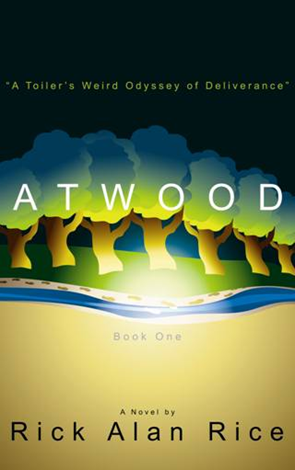
ATWOOD - "A Toiler's Weird Odyssey of Deliverance" -AVAILABLE
NOW FOR KINDLE (INCLUDING KINDLE COMPUTER APPS) FROM
AMAZON.COM. Use
this link.
CCJ Publisher Rick Alan Rice dissects
the building of America in a trilogy of novels
collectively calledATWOOD. Book One explores
the development of the American West through the
lens of public policy, land planning, municipal
development, and governance as it played out in one
of the new counties of Kansas in the latter half of
the 19th Century. The novel focuses on the religious
and cultural traditions that imbued the American
Midwest with a special character that continues to
have a profound effect on American politics to this
day. Book One creates an understanding about
America's cultural foundations that is further
explored in books two and three that further trace
the historical-cultural-spiritual development of one
isolated county on the Great Plains that stands as
an icon in the development of a certain brand of
American character. That's the serious stuff viewed
from high altitude. The story itself gets down and
dirty with the supernatural, which in ATWOOD
- A Toiler's Weird Odyssey of Deliveranceis the
outfall of misfires in human interactions, from the
monumental to the sublime. The
book features the epic poem "The
Toiler" as
well as artwork by New Mexico artist Richard
Padilla.
Elmore Leonard
Meets Larry McMurtry
Western Crime
Novel
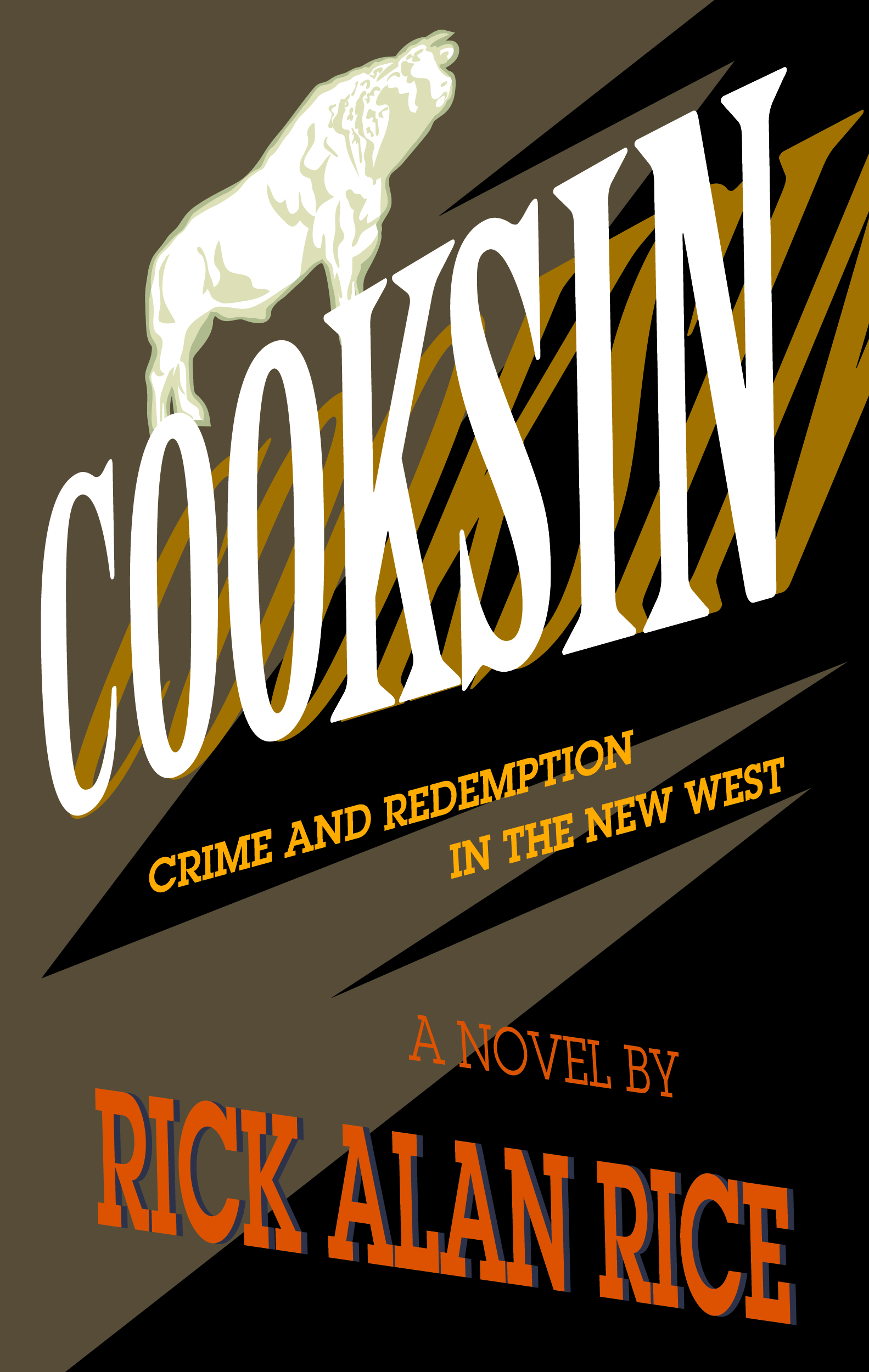
I am offering another
novel through Amazon's Kindle Direct Publishing service.
Cooksin is the story of a criminal syndicate that sets its
sights on a ranching/farming community in Weld County, Colorado,
1950. The perpetrators of the criminal enterprise steal farm
equipment, slaughter cattle, and rob the personal property of
individuals whose assets have been inventoried in advance and
distributed through a vast system of illegal commerce.
It is a ripping good yarn, filled
with suspense and intrigue. This was designed intentionally to
pay homage to the type of creative works being produced in 1950,
when the story is set. Richard Padilla
has done his usually brilliant work in capturing the look and feel of
a certain type of crime fiction being produced in that era. The
whole thing has the feel of those black & white films you see on
Turner Movie Classics, and the writing will remind you a little
of Elmore Leonard, whose earliest works were westerns.
Use this link.
EXPLORE THE KINDLE
BOOK LIBRARY
If you have not explored the books
available from Amazon.com's Kindle Publishing
division you would do yourself a favor to do so. You
will find classic literature there, as well as tons
of privately published books of every kind. A lot of
it is awful, like a lot of traditionally published
books are awful, but some are truly classics. You
can get the entire collection of Shakespeare's works
for two bucks.
You do not need to buy a Kindle to
take advantage of this low-cost library. Use
this link to go to an Amazon.com page from which you
can download for free a Kindle App for
your computer, tablet, or phone.
Amazon is the largest,
but far from the only digital publisher. You can
find similar treasure troves atNOOK
Press (the
Barnes & Noble site), Lulu,
and others. |
|
|
|
ARTIST NEWS
|
Robert Miranda
Ferguson Zeitgeist -
"Happening Again"
Activist and
singer-songwriter Robert Miranda
apparently sees a pattern being repeated in the events surrounding the
Police shooting of Michael Brown in
Ferguson, Missouri. The horrible events that have transpired in that
city have awakened the ghosts of past atrocities committed in the United
States by authority figures whose purpose for being is to keep things
calm and cool, to avoid the disaster of people and their emotions
becoming out of control. Miranda's observation in his newly penned tune
"Happening Again" center around the
perception that a Black man can be gunned down on the streets of America
for merely being on the streets of America. It is a sentiment that gains
traction through other atrocities such as the
Trayvon Martin tragedy in Florida. In terms of a musical
expression, it recalls the Crosby, Stills, Nash &
Young tune "Ohio", from the Viet Nam War era, when National Guard
units fired upon protesting college students at Kent State University.
Does it help to have the world's troubadours comment musically on these
awful events? That is open to each individual's interpretation of the
artistry of their work, and Miranda's seems pretty solid to this
reviewer's ears. Such commentary has traditionally been an important
part of the role of an artist in this world, the troubadour who finds
ways to express the emotions that roil around events that cannot be
fully expressed through mere news reports. Miranda seems to say that
there is something bigger happening here than just another murder on an
American street; something that goes to the heart of some very real
problems in American society. His tune "Happening Again" makes a nice
companion piece to the feature below on Michael
Butler, whose experience as a Black man in Europe provides
additional insight into our American dilemma. There are major issues
left unresolved in the United States; issues that many people had hoped
would be finally addressed with the election of the nation's first Black
president, Barack Obama. The sad
truth is that his election may have only served as a catalyst for the
further expression of some truly dangerous emotions still lingering with
us 150 years after Lincoln's Emancipation Proclamation.
- RAR
|
|
|
 Dialoguing
Michael Butler Dialoguing
Michael Butler
Remember the 1982 film
My Dinner with Andre? Theater
director Andre Gregory meets writer/actor
Wallace Shawn for an evening at New York
City's iconic restaurant Café des Artistes (a location recreated for the
film in a hotel in Baltimore), to discuss Gregory's exotic experiences
as a "creative" while Shawn anguishes over the impossibility of actually
living the life that Gregory describes. Gregory is filled with
adventure, while Shawn is filled with fear. The low-voltage absurdity,
directed by famed French filmmaker Louis Malle,
offered extraordinary insights into why some people live fascinating
lives while others remain stuck in dismal normality.
This edition of the CCJ offers a similar discourse
featuring another denizen of NYC's creative community, singer-songwriter
Michael Butler. Michael, who is now
in his late 40s, was raised in relative poverty in the upscale, largely
Jewish community, of Great Neck, Long Island. He is a Black guy raised
up in a White world, which made his emersion into pop culture an
experience quite different from that of most people with his societal
and cultural profile. His life has been a saga of struggle to cross
those bridges - literally and metaphorically - that have separated his
ambitions from his destiny, for Michael has always had the stuff to make
it big in the entertainment world, but not necessarily the contexts that
would help him cross the divide. The clichés would all have him being a
Rhythm & Blues guy, but his soul has always been more Folk-Rock than
Jazz. While he came up playing CBGB
and being courted by that club's now legendary owner, the late
Hilly Kristal,
he has gained his greatest traction abroad, where European audiences
have accepted him in ways that American audiences have not. The reasons,
as perceived by Michael, are as fascinating as has been his own life
story. READ MORE...
__________________________________
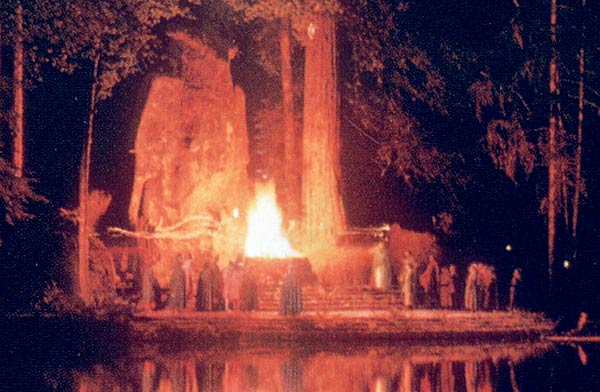
CREMATION OF CARE:
The vaguely "Druidic" ceremony of the 40-foot mystic stone owl, which
opens each Bohemian Club retreat.
So What Exactly is A
Bohemian?
Relative
to the story (right) on the
Bohemian Club of Northern California,
among the many sick-making aspects of this group of ultra-wealthy elites
is their appropriation of the identity of the "Bohemian", which has
traditionally been exactly the opposite of what the club members
actually represent. "Here is the Wikipedia definition of the title:
Bohemianism is the practice of an unconventional lifestyle, often in the
company of like-minded people, with few permanent ties, involving
musical, artistic, or literary pursuits. In this context, Bohemians may
be wanderers, adventurers, or vagabonds."
 This
use of the word bohemian first appeared in the English language in the
nineteenth century to describe the non-traditional lifestyles of
marginalized and impoverished artists, writers, journalists, musicians,
and actors in major European cities. Bohemians were associated with
unorthodox or anti-establishment political or social viewpoints, which
often were expressed through free love, frugality, and—in some
cases—voluntary poverty. A wealthy and privileged, even aristocratic,
bohemian circle is sometimes referred to as the haute bohème ("high
bohemians"). This
use of the word bohemian first appeared in the English language in the
nineteenth century to describe the non-traditional lifestyles of
marginalized and impoverished artists, writers, journalists, musicians,
and actors in major European cities. Bohemians were associated with
unorthodox or anti-establishment political or social viewpoints, which
often were expressed through free love, frugality, and—in some
cases—voluntary poverty. A wealthy and privileged, even aristocratic,
bohemian circle is sometimes referred to as the haute bohème ("high
bohemians").
The term Bohemianism emerged in France when artists and creators began to
concentrate in the lower-rent, lower class, gypsy neighborhoods. Bohémien was a common term for the Romani people of France, who had been
wrongly considered to reach France during the 15th century via Bohemia,
at that time the only protestant, and therefore heretical, country among
Western Christians.
The painting shown here is Pierre-Auguste
Renoir's "The Bohemian" (or "Lise the Bohemian"), 1868, oil on canvas,
Berlin, Germany: Alte Nationalgalerie.- RAR
___________________
Apple
Streaming, Dumping Downloads
Apple might operate the largest online music store in the world, but the
Apple Store's iTunes digital music sales have fallen about 13 percent
this year. Apple will be relaunching and rebuilding Beats Music -- the
existing $10-a-month subscription streaming service -- under its own
brand. Meanwhile, Spotify is surging ahead. The music streaming service
hit 10 million global paid subscribers in May, up from 6 million paid
subscribers in March 2013. (They have yet to show a profit.) Throw in people who use the service but don't
pay, and Spotify now lays claim to 40 million active users, up from 24
million in March 2013. Then there's Pandora, the Internet radio service
with 80 million users, which dominates the streaming music industry.
Those numbers have steadily increased, up from 70 million in May 2013,
as listening hours have continued to increase, too. |
Druidic Cheeseburgers
Rocking
Bohemian Grove
The
next time Stevie Miller tells you to "Fly Like An Eagle", cover yourself
because you are about to be pooped upon by an American symbol that has
jettisoned the ideals upon which the home of the brave, the land of the
free was founded.
Perhaps
nothing in this world piques the interest of conspiracy theorists more
than the world's secret societies. Kids these days are fascinated by the
concept of "The Illuminati", which
literally refers to a secret society founded in 1776 in Bavaria, dashed
soon thereafter (1785) by Bavarian ruler
Charles Theodore. The Illuminati was all about opposing
superstition and prejudice, and countering the influence of religion in
public life, and so Theodore received a great deal of encouragement from
the Roman Catholic Church, which is sort of a secret society in itself,
but with vastly different purposes. The Illuminati, among its many
agendas, had the emancipation of women in mind, supporting women's
education and gender equality, which has historically been anathema to
the Catholic Church. The members of this original Bavarian society were
thought to play a critical role in the French Revolution, which ushered
in a new age of democratic idealism (remember that 1776 was a key year
in the recent development of human rights) and challenged the long-held
grip on power of the aristocracy and European royalty. I don't think
kids today have any sense at all for that, believing instead that "The
Illuminati" is a powerful cabal led by powerful artists from the Hip-Hop
community, like Jay-Z, Dr. Dre, Rick Ross
and Kanye West.
Amazingly, as off-base as that is, it
isn't as stupid or as crazy as it sounds. A modern day counterpart to
the Bavarian Illuminati of the 18th Century is the
Bohemian Club, which meets every few
years on 2,700-acres of private property along the Russian River, in
Northern California, near the small town of Monte Rio. It is an
exclusive club of fabulously wealthy people, all male, who work their
way through a 15-year waiting list to pay a $25,000 initiation fee, plus
$5,000 per year annual membership. What they enter into is an exclusive
club, populated by members of the Skull & Bones club, associated with
Yale University, that festers together around some vaguely Druidic
ceremonies before breaking into little seminar groups to discuss how the
world should be run over the next few years and beyond. Many of the
nation's most suspect initiatives, such as Ronald Reagan's plan to
expand U.S. military power in the 1980s, which many historians feel was
key to the eventual collapse of the Soviet Union, came from this unholy
meeting of the minds. In fact, so much of what has made the modern world
such a horrific place, in which one percent of the world's population
controls almost half of the world's resources, literally enslaving the
majority of the world's citizens, has found the genesis of these evil
ideas among those Redwoods of Bohemian Grove.
Where the kids are not crazy is in
understanding that entertainers do get fast-tracked into this exclusive
club, and those who have made the cut are sort of jaw droppers:
Jimmy Buffet, Steve Miller,
Grateful Dead alumni
Mickey Hart and
Bob Weir, among them.
Bing Crosby was a member, as was
Mark Twain and
Jack London, in the earliest years of the club.
What the
Bohemian Club does not generally accept is Blacks and Jews,
though the singer Sam Cooke was
known to have been a member and performed there, as the rare exception.
The wealthy like music too, particularly the Blues, and they like to
hang out with those people who most of us falsely associate with "actual
bohemians". I will never confuse Buffet, Miller, and the Grateful Dead
with that type of creative spirit ever again. In fact, I am taken by the
fact that those knuckleheads are the very same people who year in and
year out rake in the big bucks on the summer concert series. They are
the well-funded shills of elites who associate themselves with these
people who so successfully posture as avatars of freedom and liberation.
In fact, they are mere puppets in a sham that is hell-bent on destroying
the freedoms of any people other than those associated with big money.
It is like a thought crime that they perpetuate, and the victims are
anybody stupid enough to buy into their phony games, and to buy their
bloody stinking concert tickets.
As Vanity Fair
writer Alex Shoumitoff reported in
his 2011 expose on Bohemian Grove, the "bohemians" are "Rumsfeld,
Kissinger, two former C.I.A. directors (including
George H.W. Bush), the masters of
war and the oilgarchs, the Bechtels
and the Basses, the board members of
top military contractors—such as Halliburton, Lockheed Martin, Northrop
Grumman, and the Carlyle Group—Rockefellers,
Morgans, captains of industry and
C.E.O.’s across the spectrum of American capitalism." They are
Walter Cronkite, the late
William F. Buckley and his son
Christopher,
Richard Nixon, and Dwight
Eisenhower. In fact, every Republican President of the last
100 years has been a Bohemian Club member. Democrats, too. They are
William Randolph Hearst and the entire
rest of the media conglomerate. They are the people who have been the
architects of the despoiling of virtue and justice in our modern world.
They are the people who meet beneath a 40-foot stone owl to cremate the
body of man. "“Come join us as we raise the battle
banners in the name of beauty, truth, peace and fellowship. Oh, Beauty’s
Vassals, let us together seek the counsel of the Great Owl of Bohemia so
that we may rediscover the wisdom needed to banish Dull Care once again!
‘Hail, Fellowship’s Eternal Flame!’”
Those are the words of the Bohemian
Club's "Cremation of Care" ceremony, which members describe as
"Druidic". It is the symbolic kickoff to a two-week bacchanal of male
bonding, which Bohemian Club member Richard Nixon described as “the most
faggy goddamned thing you could ever imagine.” That awkward sentiment
pretty much describes the disconnect between the Bohemian Club members
and those of us who must live beneath the weight of their
anti-democratic machinations.- RAR
What Is
So Bad About the Bohemian Club?
All the Bohemian
Club really is, at least on face value, is a fraternity where
members come together to listen to lectures on various issues of the
day. The problem, if there is one, is that fraternities by their very
nature create personal alliances and associations that tend to replace
the values of their individuals with those of the fraternity itself. It
is human nature for individuals to adopt the standards and mores of
those groups within which they are immersed. Studies have shown, for
instance, that in a civil war individuals will side with those in the
communities in which they live, not out of idealism or preference for
their doctrine but because it is dangerous to do otherwise. Individuals
will choose their own survival over their ideals. This is why the
Bohemian Club is so open to apparently divergent types like
Chris Matthews, Conan Obrien, Bill O'Reilly, Glenn
Beck, Rupert Murdoch, Jeffrey Toobin, David Gergen, Jack Valenti,
and Joel Klein. Wealth and power is an
intoxicant and people associated with the Fourth Estate (journalism)
surrender their moral and professional authority in the overwhelming
company of power brokers who need their public profiles to wallpaper
over those agendas of the super rich that have obviously run counter to
the welfare of the commonwealth (the rest of us). Do you believe that
megalithic corporate interests are working in our favor, when
distribution of wealth in the world at present is thought to be more
imbalanced than at any time in human history? The preeminent theoretical
physicist of our time, Stephen Hawking, has
predicted that humankind's only hope, in a world that could be unlivable
within 100 years, is migration to a new planet. This bleak and presently
unrealistic hope for the survival of the human race is the result of the
actions taken by the world's power elites, now unchecked by that Fourth
Estate whose reason for being is to protect us from these very same
elites. Can they do that job as members in good standing of the Bohemian
Club? Of course not. They are all on the payrolls of the very people
they are charged with monitoring. Fly Like An Eagle indeed, Steve
Miller, because if you fly like the dove of peace you are doomed.
- RAR |
|
|
 Teen
Music Habits Teen
Music Habits
The Way the Music Died
By RAR
The website
Indigo Boom has published the
interesting results of a survey of teenaged music fans that sheds useful
insight on the way the young generation of music lovers behave regarding
the relationships between music purchases and social media. The
findings, which will be disheartening to older music lovers, tend to
confirm much that observers of society have already felt or suspected to
be true. The "smartphone" has become an addictive drug that specializes
in small chunks of information, easily digested, that in its ubiquity
has diminished the attention spans of entire generations of users; an
ironic output of a technology that sells itself as "smart". This stock
photo above could really be captured on any street of America where
teens gather. They have cut themselves off from what is happening around
them, too busy keeping up with the stream of nonsense that populates
their media consciousness to focus with any depth on any set of data.
You can almost see their brains shrinking before your eyes. Music
interests aside, the corporate mentalities that have brought this
technology to bear have likely committed a crime against humankind, for
as a world society we have gone from being a people who read rich tomes
to being mere consumers of tripe. They likely do not know that they are
being victimized.
The first question in the survey was
"What is your preferred social media?" The
answer is certainly confirmed by my observations of my own teenaged
children. They have absolutely dumped Facebook
and Twitter in favor
Instagram and the short-form
video-sharing service Vine. Teens
find each other hilarious and can spend all day every day just keeping
up with how funny some of them actually are. In fact, a recent Pew
survey revealed that 84 percent of them sleep with their cell phones,
waking repeatedly during the night to check on the latest message, and
thereby contributing to one of the most devastating impacts of this
technology, which is sleep deprivation. People who are not sleeping
sufficiently well develop all kinds of physical and mental health
problems, including significant decreases in their abilities to perform
ordinary daily tasks at acceptable levels of quality and efficiency.
The Facebook
finding is hardly a surprise to anyone who has looked at Facebook
recently. It has become a dumping ground for cooking recipes, religious
viewpoints, vacation photos, shots of kids and grandkids, inane shots of
peoples' dining habits and their pets, and advertisements for consumer
products. The product stuff is incredibly undermining to the platform.
In my inbox currently are advertisements for State Farm Insurance and
Cascade soap, both of which are recording more than 1,500 "Likes". Have
you ever actually known of people to enthusiastically support household
cleaning products or insurance companies? One suspects that those 1,500
messages of support all come from people being paid to offer these
disingenuous endorsements. Facebook began as a low-aspiration pursuit,
designed merely to catalog the assets of university coeds, i.e.,
"faces". It's aspirations have since developed more along the lines of
data mining to the benefit of corporate merchandisers and governmental
entities such as the National Security Agency, the NSA. NSA document
leaker Edward Snowden has recently implored users of Internet technology
to avoid Facebook and Google like the plague. Incredibly, the only
people who aren't listening to his exhortations are those older users
who one would think would know better. Old people too, it seems, have
been encouraged to sheep-like behaviors at the behest of smartphone
technology. (Horrible irony: As a San Francisco Bay Area resident who
makes my living as a technical writer, I am constantly subject to
recruitment by Facebook, Google, and the rest of the operators who
are in control of huge portions of the employment opportunities in the
Bay Area, and as they represent some of the highest paying propositions
available even such as I, who sort of detests these behemoths, would
likely cave in to them were some compromise agreements ever to be worked
out. I would, out of necessity,
sell out for the money. What saves me from myself is that I am typically
considered too old for the city-sized populations that work at these
data mills.)
Teenagers feel that Facebook is for "old
people", i.e., people over the age of 25. Facebook has very little to do
with musical entertainment, although older musician types have signed on
to the free publicity potential of the site to publicize upcoming shows
and to promote recordings that no one, young or old, are likely to
buy. That segment of users is relatively small, compared to the
legions of general users. Remember that they used to use
MySpace for
this same purpose, but that platform has become a ghost, victimized by
the next new thing. Ironically, from my point of view,
MySpace was always a far richer
platform than Facebook has ever become, but richness carries very little
weight in a world society that has dropped the very concept of "richness" from
its intellectual vocabulary.
The survey further revealed that
Twitter is a narrow-focus medium
suitable only for the use of celebrities. No one cares to hear the 140
space insights of non-celebrities, particularly when the celebrity
tweets are about as meaty as one might imagine 140 space messages would
be. One suspects Twitter will eventually die out, an artifact of a time
when celebrities communicated next to nothing, and then largely to one
another.
The second question:
"What makes you interested in an artist?"
The answer to this question explains the death of the commercial music
industry. The survey finding was
that teenagers are not into artists at all, only those individual songs
that capture their attention. Since the beginning of the commercial
music industry, artists have depended upon loyal legions of fans to
purchase their records out of fealty to their appeal as artists, which
meant developing fan bases that would stick with them through thick and
thin from album to album. Iggy Pop
has commented that if he had to rely on record sales, he would have to
bartend between sets.
The death knell of that devotion has
always been in the wind, because back in the album days there was always
a recognition that out of every 12 songs on an album, only one or two
would be of any real interest. (That was a perception more than a fact,
as the Classic Vinyl and Deep Tracks channels on Sirius Radio
demonstrate, though those "radio" stations are entirely historical
artifacts, ghosts of song tracks that older users may or may not have
listened to in earlier times.) The price consumers paid for the whole
nine yards allowed the further financing of those occasional gems, and
allowed careers to stay alive. 45 RPM singles were distributed primarily
for the purpose of luring fans to buy 12-inch platters, with all those
extraneous products, that helped to finance the artists' futures. Then,
in the 1980s, consumers started expressing their desire to buy only the
individual songs that they really desired; to build their own libraries
that were "all killer, no filler". The first innovation, when digital
technology arrived, were record store kiosks where consumers could
literally purchase a single digital file. That soon gave way to Internet
delivery of product, which meant that music fans no longer even had to
visit a record store: we said goodbye to Tower Records and almost all of
the boutique record shops that used to be Valhalla to dedicated music
fans. We all stayed home and found our music singles in private, hardly
needing any interaction at all with those public markets that we had
once enjoyed. It was a precursor of things to come, i.e., the private
focus on music delivery systems.
The third question:
"What was the last album you bought or listened to?" In the words
of the Beau Brummels, "Laugh, laugh - I thought I'd cry." Teens don't
buy music of any kind, they only stream it, largely for free.
The forth question:
"How do you listen to music?" The survey response was that they
pull songs from YouTube and
Spotify, or otherwise "stream" music rather
than buying it.
The fifth question:
"Do you listen to radio?" The simple answer is "No". Radio, as it
has existed since its development as a technological advance, first in
1920 with the Westinghouse radio station KDKA, broadcast from
Pittsburgh, is largely dead. It survived the advent of broadcast television, in 1951, but it went into sharp decline in the
1980s and now exists as another historical artifact doomed for eventual
extinction. The big impact of that is that the death of radio, which
once provided
societies with a common bond and made the public airwaves a unifying
societal force, has contributed to the fracturing of society. The same could be said of television, which has
splintered into hundreds of niche channels. It seemed like the whole
world tuned in to the Ed Sullivan shows in 1964 to fall in love with
The
Beatles, becoming "all together now". We have nothing like a universally shared
social experience today.
In fact, this lack of a unifying social
force is the reason that artists have given way to celebrities like
Kanye West. It isn't the artist that
people pay attention to, but the goofy things that those people who gain
media access are able to do to bring attention to themselves, and to
then hold onto it, typically through additional stunts. This has allowed the
development of the Paris Hiltons and
the Kim Kardashians of the world,
i.e., people who are not contributing artistically to anything, but
rather are vampires of public fascination. Their superficiality has
become the model for these low-information media products discussed
throughout this article.
THERE IS NO REAL
SOLUTION: So what is the answer for the artist who hopes to
survive these mega trends in consumer's music appreciation behaviors?
Indigo Boom, which attempts to sell solutions, listed the following:
- Concentrate on one song at a time.
Record, release, promote. Rinse and repeat.
- Keep your music online over time.
Grow your catalog and streaming numbers with patience.
- Try to get your song on other
peoples playlists. This is like planting seeds. They grow over time.
- Treat popular YouTube/Spotify
playlists like radio stations. Get to know the owner and weasel your
way on to his or her playlist.
- Radio is dead to young audiences.
Forget about it. You won’t get on the radio without an expensive PR
person anyway.
- Internet radio is mostly rubbish and
will not help you at all. forget it.
- Make sure your song is on YouTube.
Even if it is only as a cover picture with the song. Not being on
YouTube is fatal.
- Avoid long intros. Think Beatles and
Aerosmith. Start with the chorus (“Dude looks like a
lady….”) Research shows you have ten seconds to catch your
listener before they switch or skip. Do not waste them.
- Put some effort in proper
cover design. A bad cover is a huge turnoff and dead giveaway.
|
Ugly Kids Club
Nashville-based duo the
Ugly Kids Club has released an
EP, Head Games. They are vocalist,
Aliegh Shields and Grammy-nominated rock producer
Steve Wilson. Experimenting with all the little
sounds they love, from whimsical soundscapes to lush 80s synths,
the Nashville-based duo crafts electro-pop driven tunes for
ultimate enjoyment. Think pop-grunge band formed by Madonna,
Andy Warhol and M83.
The pair formed in 2011 over
their love for minimalist rock duos like Sleigh Bells, Crystal
Castles and The Kills. At the time, Steve was producing projects
such as The Juliana Theory and Jonezetta, while writing,
producing and playing in his own bands, The Class of ‘98 (The
Militia Group) and Hether (Interscope Records). Aliegh, who was
fresh out of high school and new to Nashville, was a guitar
playing songstress with a solo development deal of her own.
Already acquainted through Aliegh’s brother, Wilson came on to
produce her solo tracks. In no time at all, the two uncovered a
mutual desire to form a band and switched gears to create Ugly
Kids Club. They were able to grab ahold of their own sound that
encompassed a move toward the electronic pop genre while still
paying tribute to their rock influences.
Ugly Kids Club’s self-titled
debut EP earned them recognition in over 50 music blogs, a Hot
100 Band in Music Connection Magazine and spins on Sirius XM U
radio. After a slew of shows with bands like Five Knives, Tesla
Rossa, and Coin, Ugly Kids Club set their focus on a new set of
songs for their latest upcoming EP.
|
Audio Fingerprinting
Did
you ever wonder how it is that apps like Shazaam are able to
identify the song you are listening to. It all has to do with
each song's pattern of sound waves, which are analogous to each
individual's finger prints.
|
Rock Carnival in
Brooklyn
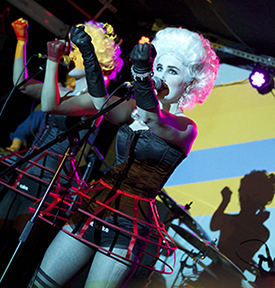
Kyle Jarrow
and his band Sky-Pony will
be hosting a rock'n roll carnival at the
Knitting Factory in Brooklyn on November 13. You
might want to rush out and get tickets. The show will feature an
eclectic blend of performers, including
The Amazing Acrobatics of 2 Ring Circus, Weezer
cover band Surf Wax America,
with Amanda Lo & Hajnal Pivnick
on violin, and Matt Owens on
trumpet, and of course Sky-Pony, led by Tony-nominated lead
singer Lauren Worsham
(who'll be hot off of doing a run of Showboat with the NY
Philharmonic and Vanessa Williams).
There will also be face painting and Tarot card reading. |
Juliana Hatfield Three
Juliana
Hatfield Recording New Album
In 1993, songwriter
Juliana Hatfield got together
with musicians Dean Fisher
and Todd Philips to record
the album Become What You Are, which yielded perhaps her
best known single, the catchy and moving "My Sister", a CCJ
favorite. That was recorded under the name the
Juliana Hatfield Three, and it
was the only album the trio ever produced. Now they are back
together and, financed through a PledgeMusic campaign, are
recording a new studio album. "Todd, Dean, and I have
begun recording with the lovely and talented Tom Beaujour (who
worked with me and Matthew [Caws] on the Minor Alps album) at
the Nuthouse in Hoboken, New Jersey, and so far it is going
great," reports Juliana in her recent newsletter. "Some of you
may have previously heard some version of some of the songs we
are working on. For example, one of the songs we are exploring
is 'If I Could'. We have always loved this song but there have
only ever been demos of it; it has never been properly finished
or produced. There are multiple attempted versions of it but the
nut has never been quite cracked, and this has always sort of
haunted me. Now I feel like I finally have the chance to get it
right with Todd and Dean. We are also exploring electricized
band versions of a couple of the punchier acoustic home-recorded
songs from my last album, Wild Animals. And there will be
some other surprises." In the video below, Juliana and Matthew
Caws do a casual record shop performance.
Use this link
to visit Juliana's PledgeMusic page to learn more and
possibly contribute to her cause.
|
Promoting Funny
Tetherball Releases
Debut LP Whimsey
Tetherball
is the brainchild of Colorado-to-Nashville transplant
Steve Voss, whose previous
incarnation was through his Atlantic Records band
The Rouge. San Francisco music
fans will remember The Rouge as a band seen playing the Fillmore
on a bill with former Stone Temple Pilots wild child Scott
Weiland. Colorado music fans will remember him from his days in
Boulder, which ended more than three years ago when he chucked
it all and moved to Nashville, where he has teamed up with
Nathan Wahlman and
RyanTullock of the band
Tesla Rossa. That trio worked
in the Nashville recording studio Solar Cabin Studios to produce
Tetherball's debut album, which is a wildly eclectic blend of
expertly produced tunes that live somewhere between the
sensibilities of Beck and
Les Claypool, which is a weirdly
beautiful place. Check out the promotional video below, which is
not only funny but provides snippets of some truly "arresting"
material, which is truly the right word because I have never
seen a publicity photograph of Voss that didn't look a lot like
a mug shot taken at a police station. Voss is a true maverick
and a really talented one to boot. -
RAR
|
| |
|
| |
|
| |
|
|
Use this link to go to the previous
edition, where you will find additional links to other archived
editions.
________________________________
Tom Guerra - "All of
the Above"
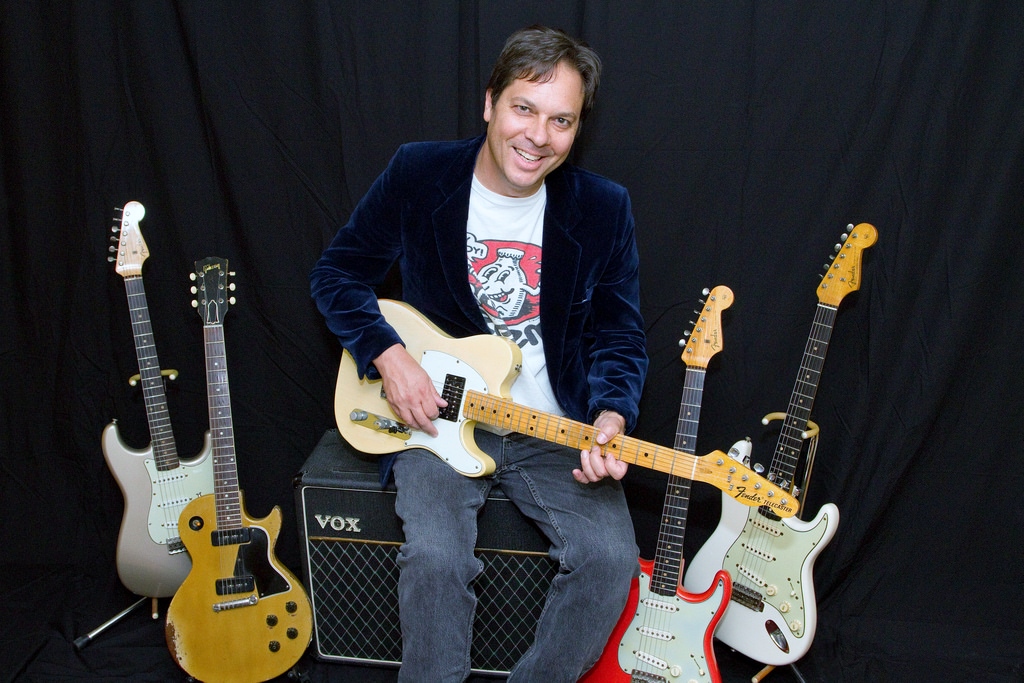
Tom Guerra, from Hartford
Connecticut, has been around since the late 70's writing songs and
playing his guitar with a variety of blues, rock n roll and R & B bands.
Over the years, Guerra has recorded or played with Rick Derringer, The
Dirty Bones Blues Band', Max Weinberg, Mark Nomad, Sticky Fingers (for
which Tom wrote and arranged original music for the group's debut cd),
The Easton Brothers with Muddy Waters bassist Charles Calmese, Jai
Johanny "Jaimoe" Johanson from The Allman Brothers Band, Second Son,
Guitar Shorty, Adolph Jacobs of The Coasters, Kenny Aaronson, and The
Delrays, for which he received acclaim from Buddy Guy.
READ MORE...
________________________________
68 - 75
A new
breed of Rock and Roll out to change the world!
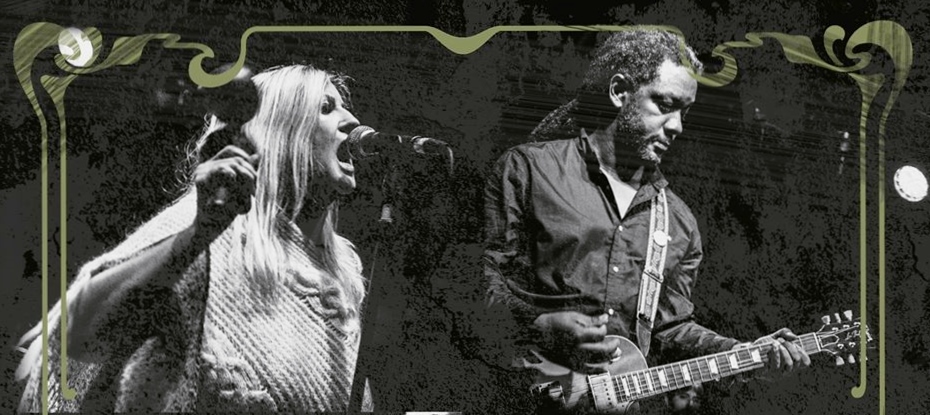
68-75
is singer Suzanne Sledge and
guitarist Andrew Cylar. Their raw
rock sound mixed with Suzanne's all out gutsy soulful southern edge
creates a powerful style of rock. The band formed in 2011 and released
their first EP in 2012. In 2014 they released a new full length CD "Stay
On The Ride". Their sound has not gone unnoticed and numerous magazines
and radio stations are raving about them. The band has shared the stage
with the legendary Leon Russell, Joe Bonamassa, Blackberry Smoke, Jackie
Greene, The Steepwater Band, Sister Sparrow and The Dirty Birds, SIMO,
Ike Stubblefield, Chris Duarte, Marc Ford and Trampled Under Foot, to
just name a few. Excitement is continuing to build about this band with
talk of a UK tour in the near future. READ
MORE...
________________________________
Oh Pono...
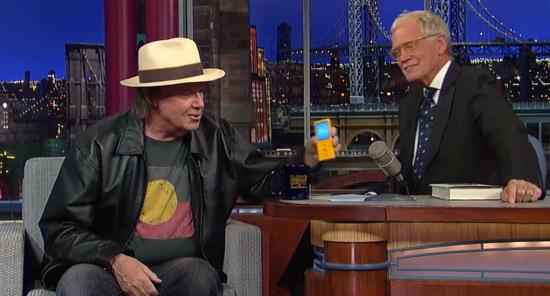
By RAR
Of all of the people who might
promote high quality digital audio, could there possibly be a more
suspect spokesman than "Crazy Horse" Neil Young?
In the interest of honest disclosure, let me
confess that I totally detest the "music" of Neil Young, which from the
first - back when Neil and his ears actually were young - has been
practically unlistenable to this reviewer's ears. His band
"Crazy Horse" was actually founded
around his suspect devotion to amplified distortion and feedback and
never had anything to do with audio nuance or sonic quality. It was
always overloaded with noise, as if it was intended to be heard through
cracked or ripped speaker cones. It was the raw alternative to the
increasingly sanitized productions that came to be the norm coming out
of music studios in the 1970s, as audio recording technology became more
and more refined. In fact, this is the reason Neil Young came to be
associated with the fierce urgency of Punk Rock. It wasn't that old
hippie Neil was part of the Punk Rock scene, it was just that he was
loud and noisy and politically polarizing in this themes and lyrics.
(I do tend to be on the same page with Neil regarding his political
points of view.) Neil's was never a pure sonic expression. Even his cramped guitar
style is more of an assault on his instrument than a nuanced expression
of sound. Going back to Buffalo Springfield
one could always tell when Neil Young was riffing on the lead parts
because they sounded like the work of a guy with spanners for fingers
using a hacksaw blade as a plectrum: horrible, to my ears. He carried
that mess on into the otherwise highly nuanced sounds of
Crosby, Stills & Nash before getting
fed up with all the sonic cleanliness and making his big noise statement
with his distortion band Crazy Horse.
Neil, however, claims that listening to the
compressed MP3 format, which took over the world with the advent of the
Apple iPod, has taken the "soul" out of music. He apparently equates
fully reproduced sound of any kind with soul.
What the vast majority of reviewers have
pointed out is that the way music listeners consume music products has
been changed by the digital revolution. The iPod's claim to fame was the
portability it provided for one's music library, which could be huge
given the compression of MP3 files. One could load a lot of MP3s, at 5
megabytes per song, onto their portable player. It wasn't so much for
home listeners as it was for people moving through noisy public places
who wanted the buds in their ears to filter out the noise of the life
that was going on all around them. This was the beginning of the "bubble
survival effect" that came to full maturation through the development of
the iPhone, which incorporated the MP3 format as an aspect of the assets
of mobile telecommunications technology. The music coming out of these
devices was becoming more and more of a wall of sound tailored by each
individual user to block out the noisy reality of that which was all
around them. For whole generations, music became not some precious gift
from the audio gods, but rather a buffer against the unwanted
distractions of life. The nature of what popular music represents to
people was redefined. The experience of life itself had changed. People
were not sitting at home listening to music as much as they were lugging
it around with them, like a security blanket.
It seems largely forgotten, a few
generations into the digital revolution, that one of the selling points
of the MP3 was that it sounded much "cleaner" than the needle noise
associated with the extremely primitive technology of vinyl records. Old
people, who grew up with vinyl, tend to associate that type of noise -
which never had anything to do with music - with "warmth"; or, perhaps
in Neil Young's case, with "soul". Listening to my old vinyl collection
had some sonic characteristics similar to sitting next to a crackling
fire. The caveman found this natural and sort of comforting. Listeners
of digital recordings felt liberated, in a qualitative sense, when the
noise of vinyl recordings was eliminated.
The Pono format offers 24-bit digital
recordings at 192 kHz, versus the existing iPhone and "CD Quality"
standard of 16-bit recordings packaged at 44.1 kHz. An MP3 file is
encoded at 256kbps.
Not that the average music consumer cares,
but these numbers reference "bit" and "sample" rates of digital files.
The kilobytes per second (kbps) refers to the amount of information that
the computer processor "reads" in that snippet of time. A CD quality
file allows the processor to read around 1.4 million bits per second,
which means that every track on a CD is really a huge volume of data:
too huge to be distributed in any format other than CD. To make the file
small enough for a portable player, the MP3 file is compressed to read
at 256 kbps, which is only 20 percent of the bit rate of a CD track.
The sample rate, expressed in kilohertz
(kHz), refers to the way that a continuous sound wave is packaged, in
sections, to be processed on a per second-basis. A 44.1 kHz sample rate
means that the sound wave is broken up into 44,100 packages per second.
Higher sample rates require larger files, and together bit and sample
rates determine the relative portability of a digital file.
So is there a loss in signal quality with an
MP3 file compressed to only 256 kbps? Yes, of course! The question is,
is this difference detectable to the listener? To put this into further
perspective, the subscription service Spotify streams files at 320Kbps.
The Pono format delivers "ultra-high resolution" files at 9216 kbps, but
it requires a special Pono format player, which by necessity has a much
larger storage device, is much larger in size than an iPhone, and costs
significantly more, like around $800 (although of late the price has
dropped to about half that, which is probably an indicator of how well
the high definition audio is catching on.). Pricewise, it is a little like
buying another laptop just for your music library.
Most of the testing on this reveals that the
average listener cannot detect any difference in quality. The
audiophiles who claim to be able to detect qualitative differences - and
there is no way to actually compare their perceptions to those of others
- tend to be well-to-do consumers who have the money to purchase this
higher quality sound device using this high resolution format.
Otherwise put, Pono is really just something
that rich people will have that differentiates them from the average
consumer.
Is it better, or is it just "Crazy Horse"
shit, like so much of our new high tech world?
That would be an individual judgment, which
will likely be made based on the size of each individual's disposable
income and the choices they make in their discretionary spending.
_______________
Out of Lawrence
The Floozies Set for Winter Tour

As
The Floozies are about embark on their
Fantastic Love Fall Tour, the
electronic-funk duo just announced yet another action-packed slew of
dates for their Do Your Thing Winter Tour. The tour will start in Omaha,
NE at the end of January and will continue West where the band will play
10 dates at numerous notable venues along the way including, The Ogden
Theatre in Denver, The Roxy in Los Angeles, The Independent in San
Francisco and The Crocodile in Seattle, to name a few. The brothers will
then return to the Midwest where they continue the second leg of their
winter tour in Columbia, MO, two-nights at The Majestic Theatre in
Madison and many more before they close out the tour in their hometown,
Lawrence, Kansas at The Granada Theater.
Joining The Floozies on their West Coast
tour will be Minnesota native and EDM producer, Manic Focus and
multi-instrumentalist and fabricator Russ Liquid on the Midwest tour.
The Floozies recently released a single,
"Fantastic Love" from their forthcoming album, set to be released in
2015 by GRiZ’s label, Liberated Music. ThisSongIsSick.com premiered the
song and described, “the song packs their signature brand of live funk
energy with the perfect electro twist. The song will have you moving
right from the beginning and will keep you entertained throughout.”
For ticketing information and all other
information on The Floozies visit their website:
www.flooziesduo.com.
_______________
Marshmallow Ghosts Get Halloween with 7-inch Single

It’s late
October. The air is crisp, and the scent of burning leaves lingers. In
the distance, you hear a chainsaw followed by the shrieks of teenage
girls. An actor dressed as a deranged and bloody farmer stalks the line,
silently harassing those who pay him no mind. Girls cling to their
boyfriends crying, “I don't want to go first!” The mood is electric. The
annual ritual of the haunted house makes you feel like you're 6 years
old, trick or treating while your parents wait for you on the sidewalk;
12 years old, going to your best friend’s costume party; 16 years old,
sneaking into a cemetery after dark.
Forget the ubiquitous “Thriller” and the
generic heavy metal usually chosen for Halloween soundtracks. Since
their first release in 2009, the rotating cast of Graveface all-stars
that make up The Marshmallow Ghosts
have been providing your most fitting music for the holiday. Effectively
acting as the Graveface Records house band, the shape-shifting cast of
boo-gooders includes members of Black Moth Super Rainbow, The Appleseed
Cast, Dreamend, and The Casket Girls. Full of peculiar ambience with
organs, fuzzy guitars, and swirly piano chords, their eerie pop tunes
sound, feel, and virtually smell like Halloween.
Following 2011’s debut full-length Corpse
Reviver No. 2 (accompanied by an album-length music video), a 7” split
with Dreamend in 2012, and last year’s 10” The Haunted and the Haunters,
this October 28th will see the release of the sixth installment of this
multi-media series, just in time for all your eerie festivities.
Corpse Reviver No.1 Vol.1 is a 7” single,
which will be paired with a book teasing the storyboards for the
upcoming release of the debut Marshmallow Ghosts full-length movie. No
release date has been set for the film, but The Marshmallow Ghosts can
guarantee that they have every intention of continuing the tradition
with their brand of ageless Halloween nostalgia.
|
